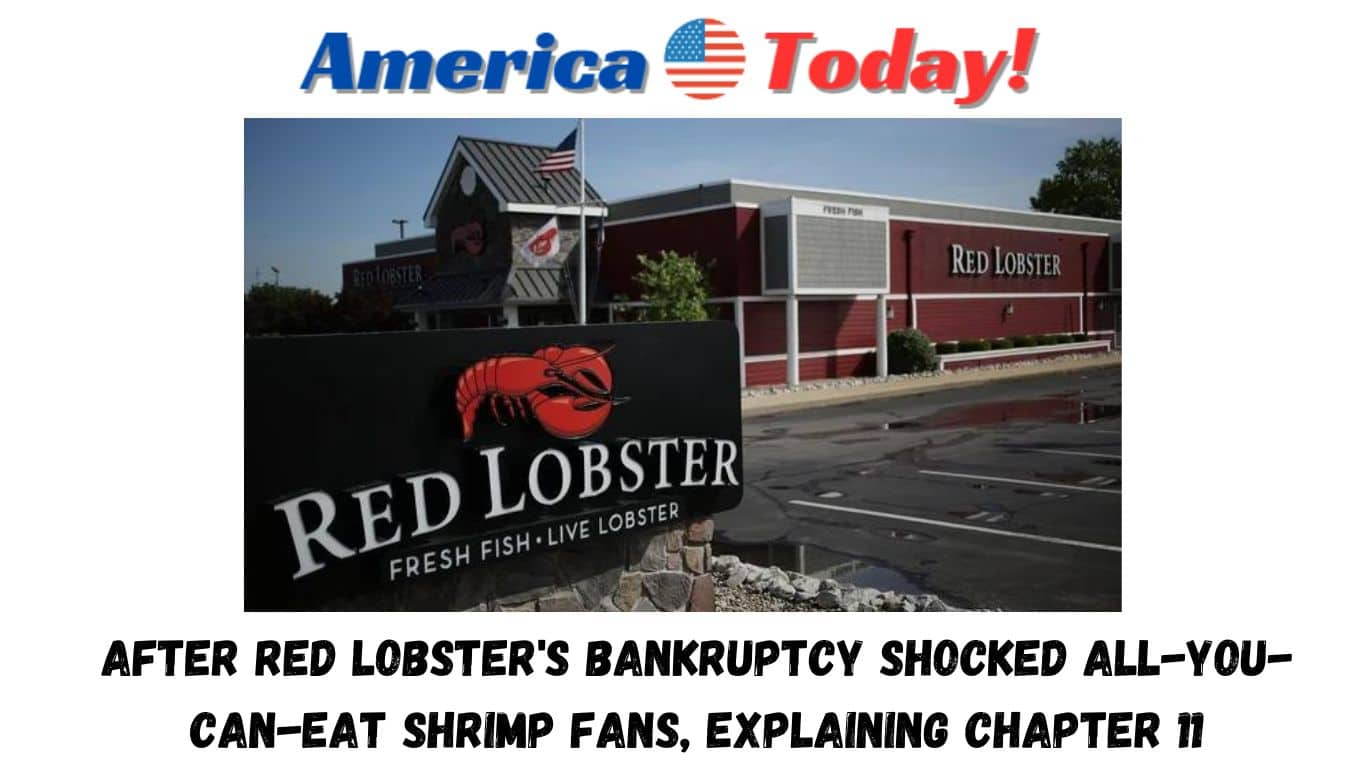welcom to America today with a new article about After Red Lobster’s bankruptcy shocked all-you-can-eat shrimp fans, explaining Chapter 11
For many Americans, your local Red Lobster may be a thing of the past.
The seafood chain closed dozens of restaurants ahead of an announcement last week that it was filing for Chapter 11 bankruptcy in Florida.
The Sunshine State, New York and Texas had the most closures, America today found.
Does this mean the seafood chain will be gone for good? Here’s what filing for Chapter 11 bankruptcy means.

What is Chapter 11 bankruptcy?
A Chapter 11 bankruptcy is a reorganization, usually for a corporation or partnership.
With court approval, they can still operate the business and borrow new money.
The corporation doesn’t liquidate its assets as in other types of bankruptcy.
In the case of Red Lobster, its bankruptcy filing detailed a 30% drop in guests since 2019.
Other issues include debt, a slew of new CEOs and an all-you-can-eat shrimp controversy.
“Filing for bankruptcy does not mean we are going out of business,” reads part of Red Lobster’s statement.
“In fact, it means just the opposite. It is a legal process that allows us to make changes to our business and our cost structure so that Red Lobster can continue as a stronger company going forward.”
It wasn’t just the endless shrimp:Red Lobster’s troubles detailed in bankruptcy filing.
How does bankruptcy work?
Bankruptcy helps individuals or businesses settle debts they can no longer pay by liquidating assets or making a repayment plan.
After you declare bankruptcy and the bankruptcy court eliminates your debt, collectors can no longer contact you about it.
Not all debts can be eliminated by bankruptcy, including debt from child support or spousal support, most student loans, tax debts, government fines, wages you owe your employees or damages for personal injury you caused while driving intoxicated.
Types of bankruptcy
Some are specific to individuals while others serve large companies or municipalities.
Here’s a look at the four you probably hear about the most: Chapter 7: For individuals or corporations, assets are liquidated Chapter 11: Reorganization for corporations or partnerships Chapter 12: Family farmers and fishermen with regular income Chapter 13: Individuals to keep property and pay debts over time, also called a “Wage earner’s plan”.
Just Curious for more? We’ve got you covered
America today is exploring the questions you and others ask every day.
From “What do you need to open a bank account?” to “What is a monopoly?” to “How much can a landlord raise rent?” – we’re striving to find answers to the most common questions you ask every day.
Head to our Just Curious section to see what else we can answer for you.
